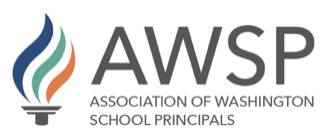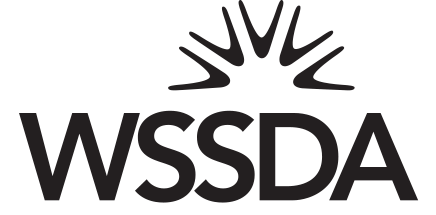Balanced Calendar Initiative
Background
 During the 2021-2022 and 2022-2023 school years, OSPI provided temporary funding using federal emergency relief funds, to public school districts, regional educational service districts, state-tribal education compact schools, and charter schools to explore increasing student learning opportunities. The goal of this program was to shrink summer learning loss by balancing or modifying school year calendars. Statewide education organizations also came together to support districts statewide in their exploration.
During the 2021-2022 and 2022-2023 school years, OSPI provided temporary funding using federal emergency relief funds, to public school districts, regional educational service districts, state-tribal education compact schools, and charter schools to explore increasing student learning opportunities. The goal of this program was to shrink summer learning loss by balancing or modifying school year calendars. Statewide education organizations also came together to support districts statewide in their exploration.
Research shows that students who have consistent access to enriching activities throughout the year are more successful in school. Families in low-income communities often do not have the same access to enrichment. They rely on schools to provide supplemental instruction — if they can — during extended vacation periods to maintain students’ academic progress. Although dedicated funding is no longer available, the AESD and state partners have compiled an extensive suite of resources for districts and school continuing this work.
Quick Links
What is a “balanced” calendar?
Instead of concentrating 180 school days into nine months, a balanced calendar spreads them throughout the year. Schools may use the breaks to host “intersessions,” where they can provide additional learning experiences if needed.
Check out THIS VIDEO from Winlock School District to see a balanced calendar in action.
Does it work?
Schools that follow a balanced calendar tend to have higher achievement scores (Pedersen, 2016). A traditional summer break lasts 10 to 12 weeks, compared to 5 to 7 weeks in a balanced calendar. Shorter breaks mean more consistent student-teacher partnerships and less learning disruption. Students need less review time at the beginning of the new school year so there is an embedded opportunity for expansion of curriculum and learning experiences.
What is an intersession?
There are times when additional school days make sense. These additional days, called intersessions, can be added to the school calendar to provide opportunities for more student learning and enrichment. All additional workdays are collectively bargained to determine how the days will be allocated and how teachers and support staff will be compensated.
Does it mean more school?
Balanced calendars usually keep the same number of school days as traditional calendars, but they add flexibility. With input and feedback from families, education leaders decide what is best for their local community. Teachers who work in a balanced calendar have reported that it is easier to plan instruction in shorter chunks between breaks rather than for a full semester (Pedersen, 2016). In addition, ending the first semester, trimester, or second quarter before winter break creates more energy and readiness for students and teachers when they return (Hasser & Nasser, 2005).
Frequently Asked Questions
What about students…
…in foster care or experiencing homelessness?
Students in foster care or experiencing homelessness are eligible to receive support through several state and federal programs. These students often have disruptions in their education which can make it difficult for them to be on target for graduation. A balanced calendar can provide additional opportunities for credit accrual and recovery, as well as interrupt the effects of cumulative learning loss in developing individual school graduation plans.
…with disabilities?
Students with disabilities may not have access to highly specialized resources (occupational therapists, physical therapists, speech and language specialists, adaptive equipment) during long summer breaks. Transition services, such as job shadows, can take place during intersessions without taking the student out of classroom instruction.
When interventions take place at the end of each summative period, there is evidence of a reduction of students needing Individualized Education Programs (IEPs) or qualifying for special education services over time (Smith, 2011; Evans, 2007).
…who are migratory?
When migrant students move between districts with traditional and balanced calendars, the state’s Migrant Education program provides supplemental academic help as well as secondary credit accrual and exchange.
…in off-campus school programs?
For students in Running Start or who are learning a trade, consider local community college and skill center schedules for potential impacts on students participating in those programs part-time.
…in advanced programs, like AP or IB?
A balanced calendar can provide an opportunity for involvement in special projects and targeted learning opportunities. When considering calendar modifications, schools should take into account the program design and testing schedules for Advanced Placement, International Baccalaureate, and Cambridge International programs.
Does it affect high school credits and graduation requirements?
State graduation requirements remain the same. Each school district is responsible for supporting every student to earn necessary credits for graduation, meet their graduation pathway, and complete a High School and Beyond Plan.
What should schools consider when exploring school year calendar changes?
Communication and community engagement
Identify and engage key stakeholders early, including educator groups, families, students, and community partners. Thoughtful communication and engagement can go a long way toward establishing common ground and creating transparency in the process and decision-making. Communicate with families about how changes to the school calendar may affect existing practices and schedules for report cards and student conferences.
Use of instructional time
Intersessions can be used to support continuous forward momentum for all students. Schools should consider how to make use of time for supplementary opportunities to learn as intervention or enrichment.
Collective bargaining agreements
Identify areas that need to be addressed with current local bargaining agreements and work collaboratively to problem-solve and negotiate to reach a consensus with all impacted bargaining units. In general, the school year calendar agreed to during the collective bargaining process will also determine when report cards and student conferences occur.
Educator and staff support
Transitioning to a balanced calendar requires some rethinking of instructional time and the scope/sequence of instruction and intervention supports for students. Throughout the planning and exploration process, districts should work closely with their instructional staff and teams to identify where support is needed and proactively factor this support into the transition process and collective bargaining agreements, as necessary.
Child care, after-school care, and parenting agreements
Connect with families and community partners early, including child care providers. Gather their feedback about the prospect of a school year calendar change. Some families have shared that it is easier to budget for six weeks of care in the summer with periodic week breaks throughout the school year, than it is to pay for care for 10 to 12 consecutive weeks during a traditional summer break (Flaminio Interview, 2022). Some child care providers have cited the shift to a balanced calendar has offered a growth opportunity for their business (Ballinger & Kneese, 2006).
In the exploration process, include families who operate under a parenting agreement or who are in single-parent households. In some cases, a balanced calendar may provide more opportunities for equity in shared custody arrangements, especially where one parent has custody during the school year, while the other has custody during summer break.
What about high school sports?
High school athletics are often viewed as a barrier due to scheduling challenges, but conflicts can be mitigated. For decades, school districts across the nation have successfully supported interscholastic sports among schools with different school year calendars. In fact, the modern balanced calendar has ties back to the 1890s. Washington’s Interscholastic Activities Association (WIAA) has successfully navigated a variety of school year calendars. Despite changes in leadership, WIAA has stated their support of allowing districts to determine the right school year calendar for their students and communities.
What about school meals?
The National School Lunch Program (NSLP) and School Breakfast Program (SBP) may be operated on planned educational days. Enrolled students attending on-campus, educational activities are eligible to participate and may receive one breakfast and one lunch daily. Meals must meet the NSLP and SBP Meal Pattern requirements and are reimbursed at the school’s NSLP and SBP rate. Schools must count and claim meals according to a student’s approved eligibility status unless they are participating in the Community Eligibility Provision (CEP) or Provision 2. An application and calendar must be submitted within the Washington Integrated Nutrition System (WINS) for the participating schools and planned educational days at the beginning of each school year. Local Education Agencies (LEAs) should contact their assigned School Meal Programs Specialist with any questions.
Balanced Calendar Resources for Districts
Washington’s statewide education organizations and OSPI are committed to supporting districts as they explore school year calendars. Below are resources available to schools and districts on the journey.
Sustainability & Funding
These resources come from our partners at OSPI with and include creative strategies for braiding and unlocking state and federal funding to support and sustain balanced calendar efforts.
Balanced Calendar Basics
These resources provide a strong foundation that will set the stage for developing balanced school-year calendar.
- A Balanced Approach to Student Success (Presentation)
- Balanced Calendar 101: David Honak, October 2023 (40:37)
- Balanced Calendar Fall Summit Presentation
- Balanced Calendar Process & Timeline – Mt. Adams School District
- Building a Balanced Calendar & Creating an Effective Intersession | May 2024
- Glossary of Terms
- Infrastructure
- Summer Learning (2:10)
Planning Resources
These robust resources include tools for equity planning, calendar templates, timelines, data measurement and strategy development.
- Balanced Calendar Journey for Equity
- Best Practices for Balanced Calendars (Hanover Research)
- Developing a Measurement Strategy (Presentation)
- Four-day school week
- Policy Leadership to Transform the K-12 School Calendar Year for All Students (Presentation)
- Team Planning Template (Word Doc)
- Timeline for Planning a Balanced Calendar
Start with Why and Data
- Data & the Balanced Calendar (Presentation)
- Steps to Successful Implementation (Presentation)
- Using Improvement Science (Presentation)
- Western Region Leaders Workshop: Why Balanced Calendar (Presentation)
District Documentation & Presentations
- Finley School District Planning
- Highland Balanced Calendar Planning Journey (Padlet)
- Mt. Vernon Balanced Calendar Planning District Site
- Mt Adams School District Balanced Calendar Resources and Initial Balanced Calendar Meeting Feedback
- Soap Lake SD Balanced Calendar Team Planning
- Wapato School District Balanced Calendar (Presentation)
- Winlock School District Modified Calendar Planning & Research
North Mason School District Planning Agendas and Resources
School Board Leadership & Governance
These resources include important considerations regarding the role of school boards as the district’s governing body to support exploring and implementing a balanced calendar.
Constituent & Community Engagement
These resources include district presentations on strategies for engaging students in the exploration process, and how they have included community partners when considering modifying school year calendars.
- A Learning Event for Families On Balanced Calendars (Video – 55:46)
- Engaging Student Voices – Video and Presentation
- Working with Communities and Tribal Relations (Presentation)
- Working with Community Stakeholders (Presentation)
- Working Outside the School Walls – Video and Presentation
Intersession
Learn how districts have considered intersessions as a key component in their modified school year calendar. Resources include considerations and lessons learned.
- Effective Intersession Programming – Video and Presentation
- Intersession Programming – Video and Presentation
- Intersession Resources
- Native students connect with culture during new Yakima School District session
Working with Labor Organizations
Labor partners are key to successful implementation of a modified school year calendar. These resources include two examples of how labor organizations were brought into the balanced calendar conversation.
- Balanced Calendar in the Oakville School District – Video and Presentation
- Impacts on Classified Bargaining – Video and Presentation
Research & Case Studies
Take a deep dive into published dissertations and measurement strategies and gain insight into the development of policy and procedures.
- Addressing the Learning Loss (Presentation)
- Balanced Calendar Research & WA Case Students (Video)
- Chesterfield County Public Schools & Hopewell City Public Schools
- Modified Calendar and Year-Round Education Academic Research, Doctoral Dissertations and Social & Emotional Research
- School Board Policy Questions
- Single-track year-round education modestly improves average math and reading achievement of K-12 students
- The History of School and Summer Vacation
- What Do We Actually Know about the Four-Day School Week?
- Why Balance the 180-Day School Calendar Year?
Books
Balanced Calendar “In Action”
Journey through school district presentations on implementation of a balanced calendar.
- Graduation Equity: Balanced Calendar & Scheduling (Video)
- Toppenish School District 2023-24 Balanced Calendar Learning – Video and Presentation
- Yakima Intersession – Native students connect with culture during new Yakima School District session
- Wahluke – Balanced Calendar Journey (Presentation)
- Wapato School District Balanced Calendar (Presentation)
- Winlock School District :Living and Working in a Balanced Calendar – Video and Presentation
Mt. Adams School District
- Feedback from Initial Balanced Calendar Meetings
- Balanced Calendar Work Record
- Balanced Calendar Timeline
- Balanced Calendars: An Overview (English Presentation / Spanish Presentation)
Sample Calendars
These resources include examples of SY 2024-25 school/district calendars from across Washington State and the U.S. .
Washington State Districts
- Freeman School District Balanced Calendar 2024-25
- Mount Adams School District Balanced Calendar 2024-25
- Oakville School District Balanced Calendar 2024-25
- Port Townsend School District Balanced Calendar 2024-25
- Toppenish School District Balanced Calendar 2024-25
- Union Gap School District Modified Calendar 2024-25
- Winlock School District Modified Calendar 2024-25
Districts in other States
- Custer 2024-2025 Calendar
- Cypress School District 2022-20923 Academic Calendar Year-Round
- Hopewell Virginia Instructional Calendar
- ITAIUSD Public 2022-2023 Year-Round Calendar
- Washoe School District 2024/25 Academic Balanced Calendar
- York South Carolina 2023-2024 Academic Balanced Calendar
Balanced Calendar Implementation in Washington Districts
| School District | Status | Educational Service District | District Calendar |
|---|---|---|---|
| Port Townsend School District | Studying / Exploring | Olympic Educational Service District 114 | N/A |
| Roosevelt School District | Studying / Exploring | Educational Service District 112 | N/A |
| Skykomish School District | Studying / Exploring | Puget Sound Educational Service District 121 | N/A |
| South Kitsap School District | Studying / Exploring | Olympic Educational Service District 114 | N/A |
| Toledo School District | Studying / Exploring | Capital Region ESD 113 | N/A |
| Toppenish School District | Some Calendar Modifications Made | Educational Service District 105 | View Calendar |
| Union Gap School District | Fully Implemented Balanced Calendar | Capital Region ESD 113 | View Calendar |
| Wahluke School District | Some Calendar Modifications Made | Educational Service District 105 | View Calendar |
| West Valley School District | Studying / Exploring | Educational Service District 101 | N/A |
| Winlock School District | Fully Implemented Balanced Calendar | Capital Region ESD 113 | View Calendar |
Initiative Partners

Office of Superintendent of Public Instruction
Contact: Jon Mishra
Visit OSPI Website

Association of Educational Service Districts
Contact: Jessica Vavrus

National Association of Year-Round Education
Contact: David Hornak
Visit NAYRE Website

Association of Washington School Principals (AWSP)
Contact: Scott Seaman
Visit AWSP Website

Washington Education Association (WEA)
Contact: Sally McNair
Visit WEA Website

Washington Association of School Administrators (WASA)
Contact: Mike Nelson
Visit WASA Website

Washington State School Directors’ Association (WSSDA)
Contact: Tim Garchow
Visit WSSDA Website
